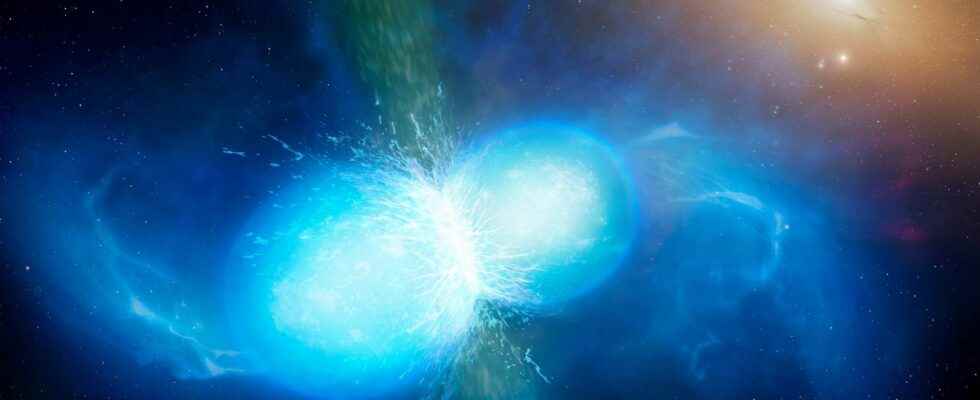By studying the GW170817 signal, resulting from the merger of two neutron stars and resulting, among other things, in a kilonova, a team of astronomers points out the singular nature of the phenomenon, including a flux of residual X-rays likely to provide clues on the nature of the object resulting from the fusion of these two massive stars.
You will also be interested
[EN VIDÉO] Gamma-ray bursts: neutron star collisions light up the Universe Gamma-ray bursts are the brightest events in the Universe in the field of electromagnetic waves. We can observe one per day on average on the celestial vault and they occur in distant galaxies. There are two types, short and long. This video explains the nature of short bursts.
Detected on August 17, 2017 in the galaxy NGC 4993 through instruments Ligo and Virgo (two interferometers designed to detect gravitational waves), GW170817 is a signal attributed to a direct observation ofgravitational waves. Described as oscillations in the curvature of space-time which propagate from a source, gravitational waves were predicted by Albert Einstein as early as 1916, but it took nearly a hundred years for the first observation of gravitational waves to be made, in September 2015.
A unique signal
According to the astrophysiciststhis signal would have been emitted following the merger between two neutron stars. But what makes it special is the detection ofelectromagnetic waves associated with it: this is the first time that an astronomical phenomenon has been detected both in the form of gravitational waves, as well as in light form. Indeed, a startle gamma (GRB170817A), associated with GW170817, was detected by the Fermi Gamma-ray Space Telescope less than two seconds after the start of the gravitational wave signal.
Since then, nearly 70 observatories, on the ground or in space, have taken part in monitoring the phenomenon. The radio telescopes american VLA and VLBA, for example, were able to observe waves radio remnants associated with GW170817, confirming the scenario of a coalescence of two neutron stars.
A kilonova associated with the phenomenon
Detected almost 11 hours after the observation of gravitational waves, the AT 2017gfo event was interpreted as a kilonova (can be defined as a supernova underlight). Due to its spatio-temporal proximity to GW170817, this kilonova has been associated with the same neutron star merger. This phenomenon would have been accompanied by a jet of charged particles, moving at a speed close to that of the light and producing a episode X-rays, measured by NASA’s Chandra Observatory. According to a team of American astrophysicists, the study of these X-rays could be the key to identifying the object resulting from the merger of these two neutron stars.
Shortly after their detection, the X-ray emissions produced by the jet of matter would have diminished little by little, while the jet of matter slowed down. But since 2020, this decline in brightness would have stopped, giving way to a relatively constant emission of X-rays. According to the astronomersthis would indicate the detection of an additional object, different from the charged particle jet: another source of X-rays is then necessary to explain these observations.
An afterglow… or even a black hole?
According to astronomers, this new source of X-rays could come from a shock generated by the rapid expansion of the debris resulting from the fusion between the two stars. This shock would have heated the surrounding materials, thus emitting X-rays – this phenomenon would then be associated with a residual luminescence of the kilonova.
The hypothesis of a black hole is also not ruled out, as materials falling into this cosmic giant can similarly generate such X-ray emissions. , because the associated radiation should be much brighter.
To find the end of the story, the astronomers will continue their observations of GW170817, in X-rays as well as in radio waves: in the case of residual luminescence from the kilonova, the emissions of X-rays and radio waves are expected to increase over the next few months. On the other hand, if the emission of X-rays decreases and the emission of radio waves is stopped, the scientists will rather lean towards the scenario of the formation of a black hole (this would then be the least massive detected!).
Interested in what you just read?
